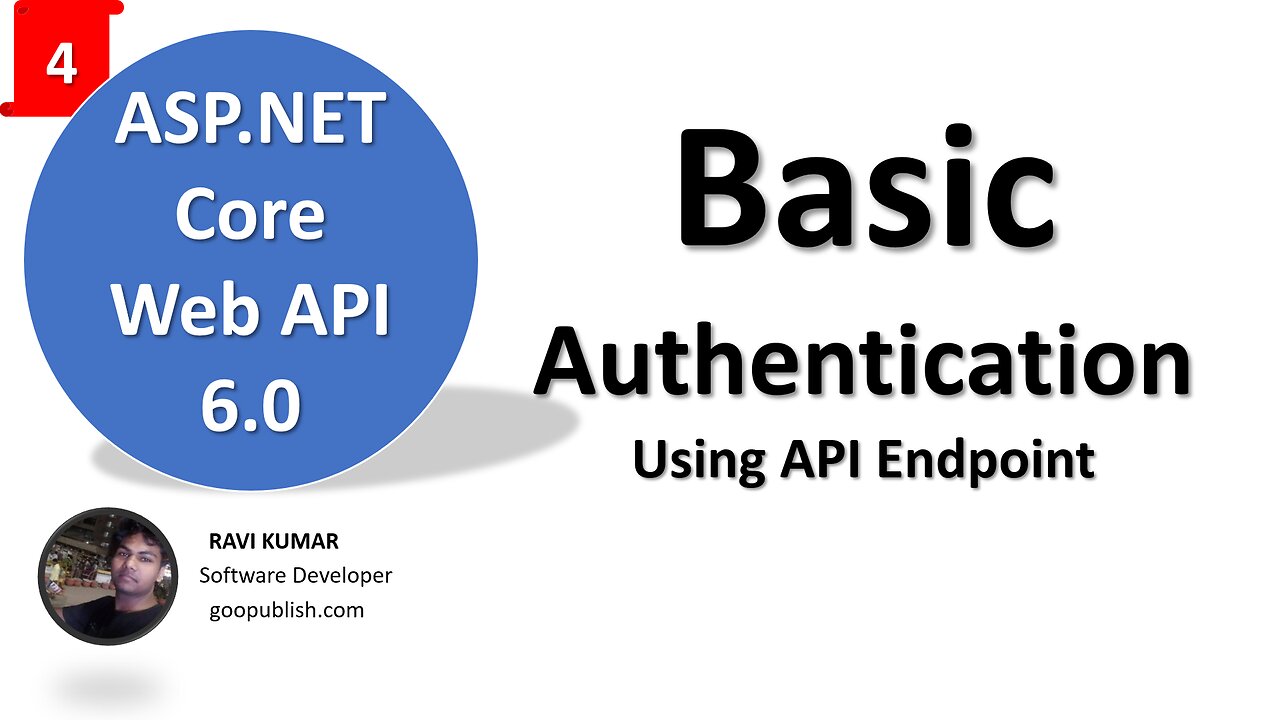Premium Only Content

Part-4 | How to Implement Basic Authentication || Asp.Net Core Web API 6.0
Basic Authentication is a simple authentication mechanism used to secure web APIs and other online services. It involves sending a username and password in the HTTP request headers, which are base64-encoded. While it's straightforward to implement, it's not the most secure method and is typically used in combination with HTTPS to ensure the security of the transmitted credentials.
Here's how Basic Authentication works in theory using a web API:
1. **Client Request**: The client (e.g., a mobile app or a web application) makes an HTTP request to a protected resource on the web API server. The client includes an "Authorization" header in the request.
2. **Header Creation**: To create the "Authorization" header, the client combines the username and password into a single string, separated by a colon (e.g., "username:password"). This string is then base64-encoded.
3. **HTTP Request with Authorization Header**: The client includes the base64-encoded string in the "Authorization" header of the HTTP request.
4. **Server Authentication**: The server receives the HTTP request and extracts the "Authorization" header.
5. **Decoding the Credentials**: The server decodes the base64-encoded string from the "Authorization" header to obtain the username and password.
6. **Authentication**: The server compares the provided credentials with its stored user credentials (e.g., in a database). If they match, the server grants access to the protected resource. Otherwise, it returns an authentication error (e.g., HTTP 401 Unauthorized).
7. **Access Granted**: If the credentials are valid, the server allows the client to access the protected resource, and it returns the requested data or performs the requested action.
In this example, "dXNlcm5hbWU6cGFzc3dvcmQ=" is the base64-encoded string for "username:password."
Important considerations:
1. **Security**: Basic Authentication should always be used with HTTPS to encrypt the credentials during transmission. Without HTTPS, the credentials can be easily intercepted.
2. **Credential Storage**: Server-side, it's essential to securely store user credentials (usually hashed and salted) to protect them from data breaches.
3. **Token-Based Authentication**: While Basic Authentication is simple, token-based authentication methods like OAuth2 or JSON Web Tokens (JWT) are more secure and often preferred for modern web APIs.
4. **Rate Limiting**: To prevent abuse, it's a good practice to implement rate limiting and other security measures when using Basic Authentication.
5. **User Experience**: Consider user experience when using Basic Authentication, as it may require users to enter their credentials frequently, unlike token-based methods that offer more persistent sessions.
-
 2:23:37
2:23:37
The Quartering
4 hours agoA WAR On The Right Is Brewing, RFK With LANDMARK Win, Ivermectin FINALLY Approved & More
57.5K22 -
 LIVE
LIVE
Darkhorse Podcast
1 hour agoThe 273rd Evolutionary Lens with Bret Weinstein and Heather Heying
959 watching -
 LIVE
LIVE
RiftTV/Slightly Offensive
1 hour agoCHAOS in Trump Admin, Tesla Profits CRASH, Hegseth in TROUBLE? | The Rift Report
1,014 watching -
 LIVE
LIVE
Dr Disrespect
4 hours ago🔴LIVE - DR DISRESPECT - WARZONE - HOW TO WIN SOLO GAMES
2,683 watching -
 LIVE
LIVE
The HotSeat
1 hour agoAmerica: The Upside Down Is REAL!
665 watching -
 LIVE
LIVE
Film Threat
5 hours agoANDOR SEASON 2! ALL EPISODES REVIEWED! | Hollywood on the Rocks
83 watching -
 2:01:02
2:01:02
MG Show
5 hours agoMaking America Healthy Is Happening: Deep Dive
6.95K14 -
 21:23
21:23
SLS - Street League Skateboarding
12 days agoLuan Oliveira's Top SLS Moments: 2015
9.6K -
 12:16
12:16
Cowboy Kent Rollins
6 days ago $2.31 earnedFried Onion Burger | Famous Oklahoma Fried Onion Burger Recipe
30.5K8 -
 57:42
57:42
Crypto Power Hour
4 hours agoThe Wicked Witch Is Dead, New Leadership At The SEC |EP15
4.6K1